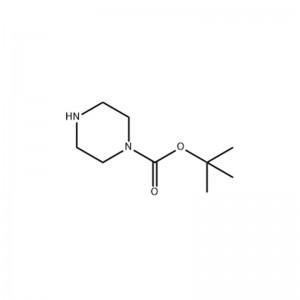
Products
Phthalide
Structural Formula

Physical Properties
Appearance: white solid
Melting point: 71-74 °C (lit.)
Boiling point: 290 °C (lit.)
Density: 1.1 FEMA 4195 | PHTHALIDE
Refractivity: 1.5360 (estimate)
Flash point: 152 °C
Safety Data
It belongs to common goods
Customs code:2932209090
Export Tax Refund Rate(%):13%
Application
Phthalein is the intermediate of fungicide phenoxy ester. It is also used as an intermediate of fine chemicals. Used in the production of dye intermediates 1,4-dichloroanthraquinone, 1- chloroanthraquinone, anticoagulant phenylindandione, bactericide tetrachlorophthalide, and anxiolytic drugs. It is also used as an organic synthesis intermediate, for the synthesis of doxepin drugs and dye-reduced brown BR, etc.
[Ingestion] If the victim is awake and alert, give 2-4 cupfuls of milk or water. Do not give anything to eat to a person in a comatose state. Get medical help.
[Inhalation] Immediately from the scene to fresh air. If there is no breathing, give artificial respiration. If breathing is difficult, give oxygen infusion. Get medical assistance.
[Skin] Get medical assistance. At least 15 minutes while rinsing the skin with plenty of soap and water, remove contaminated clothes and shoes. Clothes should be washed before reuse.
[Eyes] Flush with plenty of water for at least 15 minutes, rinse eyes, and lift upper and lower eyelids from time to time. Seek immediate medical attention.
Handling
【Handle】 Wash thoroughly after operation. Remove contaminated clothing and wash before reuse. Use with adequate ventilation. Reduce dust generation and accumulation. Avoid contact with eyes, skin and clothing. Keep container airtight. Avoid ingestion and inhalation.
Hazard identification
[Ingestion] May cause irritation of the digestive tract. The toxicological properties of this substance have not been fully investigated.
[Inhalation] May cause respiratory tract irritation. The toxicological properties of this substance have not been adequately investigated.
[Skin] May cause skin irritation.
【Eyes】 May irritate the eyes.
Exposure control / Personal protection
Personal Protection】Eyes: Wear appropriate protective eyewear or chemical safety goggles, OSHA's eye and face protection regulation 29 CFR 1910.133 or European Standard EN166. Skin: Wear appropriate protective gloves to prevent skin contact. Clothing: Wear appropriate protective clothing to prevent skin contact.
[Respirator] Follow OSHA respirator regulations 29 CFR 1910.134 or European Standard EN 149. Be sure to use a NIOSH or European Standard EN 149 approved respirator when necessary.
Firefighting measures.
[Fire Fighting] Self-contained breathing apparatus equipment, MSHA/NIOSH (or equivalent), and full-body protective clothing are required to be worn under pressure. In case of fire, irritating and highly toxic gases may be produced by thermal decomposition or combustion. Extinguish with fire water spray, chemical dry powder, carbon dioxide, or appropriate foam.
Accidental spill handling measures
[Small spill/leak] Clean up the spill immediately using appropriate protective equipment. Clean up or absorb the material and dispose of it in a suitable clean, dry, airtight container. Avoid creating dusty conditions. Provide good ventilation.
Stability and reactivity
【Sale No.】【Incompatibility】Oxidizer.
【Stability】Stable at normal temperature and pressure.
【Decomposition】 Carbon monoxide, irritating and toxic fumes and gases, carbon dioxide, pungent smoke and fumes.








